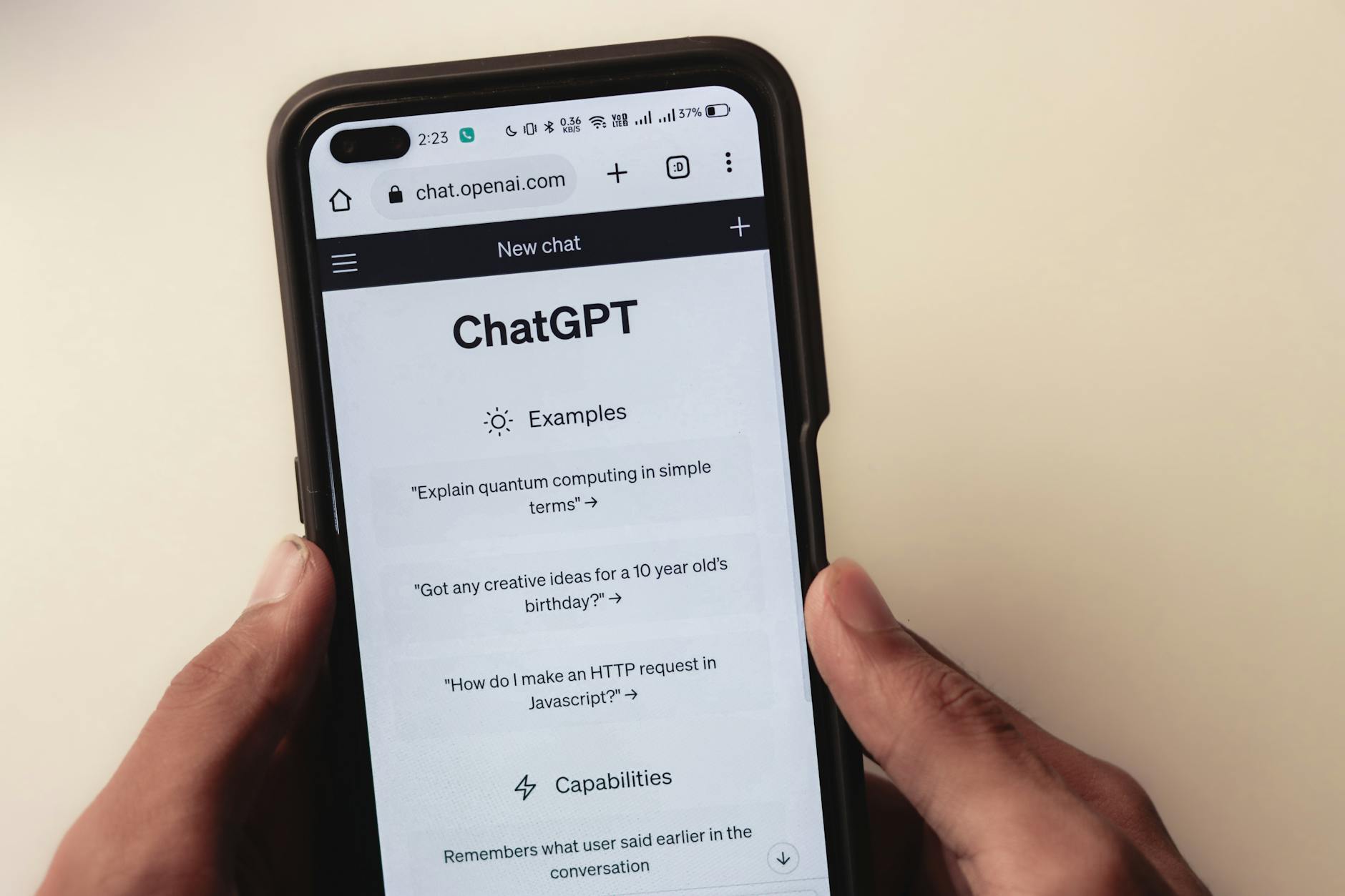Have you ever typed something into ChatGPT or another AI tool, only to get a response that feels off-base or just… weird? Maybe you asked for help with a short poem, but the AI sent back a novel. Maybe you wanted a clear answer and got a rambling mess. Suddenly, you realize the difference between a clunky, confusing prompt and a well-worded, crystal-clear one.
This is why “What Makes a Good AI Prompt?” isn’t just a question for programmers or startups. It’s something that matters to anyone—whether you’re brand new to AI or fine-tuning workflows as a pro. The way you talk to AI shapes its answers. Change your prompt, and you can swing the results from nonsense to brilliance.
Let’s break down what makes a good prompt, share some real-life examples, and lay out simple steps to help you get better responses from your favorite AI tools.
Clear, Specific, and Context-Aware: The Heart of Effective AI Prompts
 Photo by Sanket Mishra
Photo by Sanket Mishra
A good prompt is like directions to a friend. If you want them to meet you, you’d give them the address, the time, maybe what to wear if it’s a fancy dinner—every detail helps. Asking AI works the same way.
Clarity cuts out confusion. The more clear you are, the more likely you are to get what you need. Ambiguous prompts confuse the AI, which means vague, unhelpful replies.
Details define the target. Think of requesting a joke. If you just say, “Tell me a joke,” you might get anything. But if you ask, “Tell me a three-sentence joke about computer safety for kids,” you’ll get something focused, safer, and more useful.
Context steers the conversation. Tell the AI if you want a list, a story, a summary, or advice. If you’re writing for kids, say so. If the audience is business pros, make that clear. These simple steps transform your prompt from generic to gold.
Tip sheet for clarity:
- State your topic and audience.
- Set the format—sentence, list, story, etc.
- Avoid broad or double-barreled questions.
Good prompts don’t leave the AI guessing.
Why Details Matter: From Basic to Advanced Prompts
Ever played a game of telephone? The first message starts strong but quickly warps into nonsense when details fade. That’s what happens with basic prompts.
If I ask, “Write about space,” I could get anything—planets, astronauts, black holes, even sci-fi stories. But if I say, “Write a three-paragraph explainer about why astronauts drink water differently in space, for middle schoolers,” I’ve narrowed things down. I’m controlling language, tone, and length.
Think of prompts like recipes. If you hand someone flour and eggs but no instructions, results will vary wildly. Give the step-by-step, and you’re more likely to get grandma’s perfect pancakes.
- Basic Prompt: “Tell me something about health.”
- Advanced Prompt: “List five simple tips for staying healthy when working from home. Keep each tip under 20 words.”
Better prompts guide AI closer to your real goal.
Role and Format: Guiding the AI Like a Pro
When I talk to AI, I like to give it a job title. Words like, “Act as a historian,” or “Pretend you’re a marketing coach” turn the AI into a specialist. Now it’s not just talking at random—it’s working from a set of rules.
Format is a secret weapon. Ask for output as bullet points, a friendly story, or a formal email. The more specific, the better.
Practical prompt ideas:
- “Act as a resume expert. Rewrite my summary to sound more professional.”
- “Respond as a children’s storyteller. Make a short story about a rabbit learning teamwork.”
- “Summarize this news article in five bullet points for someone who only has a minute.”
Specifying roles and formats helps even beginners get pro-level results. For more concrete tips, the Harvard guide on getting started with prompts offers solid advice for anyone new to the subject.
Prompt Engineering in Practice: Techniques for Better Results
Prompt engineering isn’t only for coders. It’s about steering your AI so you spend less time fixing mistakes later. Start small and build up.
- Set the context: Give background info or a sample answer.
- Add constraints: Limit length, style, or topics.
- Show examples: “Write like this:” or “Follow this pattern.”
- Iterate: Try, then tune your prompt for better output.
Advanced users fine-tune prompts based on feedback. If your AI starts inventing facts (so-called “hallucinations”), reword your prompt to be even clearer or ask for sources. The process is a bit like sculpting—a chip here, a nudge there, and suddenly things shape up.
Staying updated with new techniques is important, since AI models frequently evolve. You can find more on trends and best practices in AI prompt engineering if you want to dig deeper.
Prompt Types and When to Use Them
Not all prompts are created equal. Each type suits different needs. Here are the main categories:
| Prompt Type | What It Does | Example |
|---|---|---|
| Classification | Sorts or labels info | “Is this topic science or art?” |
| Reasoning | Works through steps | “List the pros and cons of working remotely.” |
| Completion | Finishes text | “The recipe for lemonade is:” |
| Dialogue | Chats back and forth | “Simulate a conversation with a job interviewer.” |
| Creative | Generates stories, poems, ideas | “Write a funny poem about a lost sock.” |
| Comparison | Weighs options | “Compare electric cars and gas cars.” |
| Instructional | Gives how-tos | “Explain how to change a tire in five steps.” |
| Summarization | Shortens long info | “Summarize this page for a busy student.” |
If you’re still not sure which type to use, the MIT guide to effective prompts gives more hands-on examples for each style.
Iterate and Adapt: Making the Most of User Feedback
The first prompt rarely gives perfect results. That’s normal. Think of using AI as a conversation—ask, review the reply, then tweak your request to fill in gaps or fix mistakes.
Try these steps:
- Write a first draft prompt
- Read the AI’s response
- Ask yourself, “Is this what I wanted?”
- Make changes—shorten, add detail, or clarify
- Repeat, and don’t give up after just one try
Fresh approaches and new prompt types pop up every year. Sites like this Reddit thread on AI prompting tips share power-user moves if you want to keep your skills sharp.
The Bottom Line: Strong Prompts Make Smart AI
Clear, thoughtful prompts are the magic trick for turning raw AI into real results. I’ve seen good prompts make the difference between a confused chatbot and a confident digital assistant, a homeless paragraph and a perfect summary. Whether you’re brainstorming, writing, coding, or just getting answers fast, knowing “What Makes a Good AI Prompt?” upgrades the way you use every tool on the market.
Test, tweak, and try new ideas—AI models keep changing, so your strategies should too. To deepen your practice, keep checking trusted guides, online communities, or comprehensive directories like AI Flow Review for up-to-date advice on AI tools and powerful prompt tactics. The more you practice, the sharper your prompts will get, and the smarter your AI will sound.

















